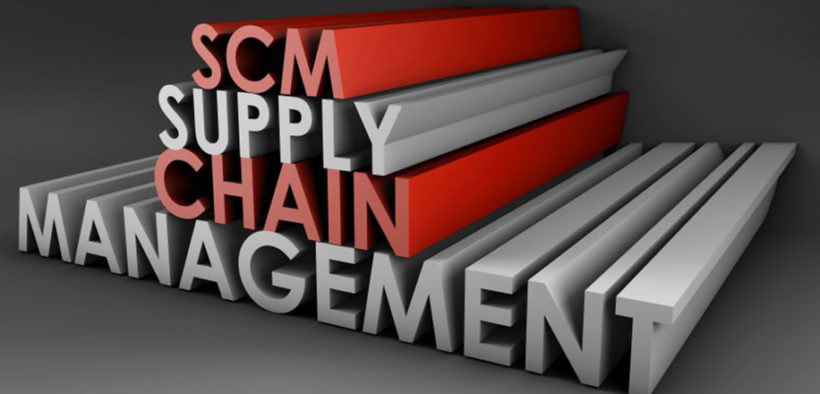The following mini case studies explore a few high-profile companies that have managed to sustain their supply chain cost-reduction efforts and keep expenses under control. The challenges faced by these organisations and the steps they took, may provide some inspiration for successful long-term cost management within your organisation.
Terex

Headquartered in Westport Connecticut, Terex Corporation may not be such a well-known name, but if your company has ever rented an aerial working platform (a scissor-lift or similar), there is a good chance it was manufactured by Terex and dispatched to the rental company from its transfer center in North Bend, Washington.
The North Bend facility is always full of lifting equipment. The company makes most pieces to order and customizes them to meet customers’ unique preferences. Terex maintained a manual system for yard management at the transfer centre, which generated excessive costs for what should have been a relatively simple process of locating customers’ units to prepare them for delivery.
The Supply Chain Cost Reduction Challenge: A wallboard and sticker system was a low-tech solution for identifying equipment items in the yard at Terex. While inexpensive in itself, the solution cost around six minutes every time an employee had to locate a unit in the yard. It also required a considerable number of hours to be spent each month taking physical inventories and updating the company’s ERP platform.
The Path to Cost Reduction: Terex decided to replace the outdated manual yard management process with a new, digital solution using RFID tracking. Terex decided to replace the outdated manual yard management process with a new, digital solution using RFID tracking. Decision-makers chose a yard management software (YMS) product, and then had the transfer centre surveyed before initiating a pilot project covering a small portion of the yard.
After a successful pilot, the company approved the solution for full-scale implementation, replacing stickers, yard maps, and wallboard with electronic tracking and digital inventory management. As of December 2017, Terex was planning to integrate the yard management solution with its ERP platform to enable even greater functionality.
Supply Chain Cost Management Results: While the YMS cannot reconcile inventory automatically with the Terex ERP application, it does at least provide a daily inventory count via its business intelligence module. That alone has saved the labour costs previously incurred in carrying out manual counts.
More importantly, though, the RFID-based unit identification and location processes have saved the company around 70 weeks per year in labour costs, by cutting the process-time down from six minutes, to a mere 30 seconds per unit.
Avaya
Avaya is a global force in business collaboration and communications technology, and not so many years ago, was operating what, by its own executives’ admission, was a worst-in-class supply chain. That situation arose as the result of multiple corporate acquisitions over a short space of time. The company was suffering from a range of supply chain maladies, including a long cash-to-cash cycle, an imbalance in supplier terms and conditions, excess inventory, and supply chain processes that were inefficient and wholly manual.
The Supply Chain Cost Reduction Challenge: After Avaya purchased Nortel Enterprise Solutions in 2009, the freshly merged company found itself but loosely in control of an unstable and ineffective supply chain operation. Aside from having too many disparate and redundant processes, the company had multiple IT solutions, none of which provided a holistic view of the supply chain or supported focused analysis.
The Path to Cost Reduction: Avaya’s senior management team realized that its technology solutions, which varied from being inadequate to inappropriate, were causing many of its problems. The various acquisitions and mergers had transformed Avaya into a different kind of enterprise, and what it needed, rather than a replacement for all the discrete systems, was one solution to tie them all together.
To that end, the company put its trust in cloud technology, which was relatively immature at the time, and migrated all processes onto one platform, which was designed to automate non-value-added activities and integrate those critical to proactive supply chain management, namely:
- Point of sale analysis
- Procurement analysis
- Supplier communication
- Supply and demand planning
- Inventory planning
- Inbound and outbound logistics planning
Of course, the technology was merely an enabler, and to transform its supply chain operation, Avaya embarked on a long-term, phased program to standardize processes, initiate a culture change, invest in top talent, and implement a system of rigorous benchmarking and KPI tracking.
Supply Chain Cost Management Results: Avaya’s program of transformation took place over a period of three to four years, between 2010 and 2014. The path to cost reduction was a long one, but ultimately successful.
By making a conscious effort to lead the enterprise into a new way of thinking, change business culture, and unify technology under a single platform, Avaya has improved inventory turns by more than 200%, reduced cash tied-up in stock by 94%, and cut its overall supply chain expenditure in half.
This dramatic turnaround also required the company to switch from a preoccupation with improving what it was doing, to a process of questioning what it was doing and why.
Related: 3 Steps You Need for Strategic Supply Chain Planning
Sunsweet Growers
This final mini-case study in our collection, highlights how sometimes, excess supply chain costs are not about warehousing and transportation, but can be attributable to inefficiencies in manufacturing or production and—often at the root of it all—forecasting and planning.
Sunsweet Growers is the world’s biggest producer of dried fruits and a little over a decade ago, found that while it was managing distribution operations well, high production costs were inflating end-to-end supply chain expenditure.
The Supply Chain Cost Reduction Challenge: When the leadership at Sunsweet looked into the company’s production cost issues, recognition soon dawned that the distribution network was at least partly behind the problems. As a result, the company looked at how it could redesign the network to take out some of the production costs.
Later, it became apparent that although a redesign would yield some benefits, one of the most significant issues was in the approach to demand forecasting. Sunsweet was using a manual forecasting approach, with spreadsheets being the only technology involved.
The inefficiencies of this approach proved not only to hamper effective forecasting and production planning, but the knock-effect was an excess of warehouses in the network—so forecasting proved to be both a driver of production cost, and a key to improving the distribution network.
The Path to Cost Reduction: As in a number of the studies we’ve explored here, technology played a large part in solving Sunsweet’s problems. After evaluating some 30 different software solutions, the company finally settled on a supply chain planning suite, and planned its improvement program to make use of each of the solution’s modules in sequence, allowing ROI to be realized in phases as each module was implemented and leveraged.
At the same time, Sunsweet implemented a sales and operations planning program (S&OP) that once established, enabled plant resource requirements to be anticipated months—rather than weeks—in advance. As the overall improvement plan passed through its five phases, positive results accumulated and as hoped, software ROI reached 100% even before the company completed its full implementation.
Supply Chain Cost Management Results: Of course, the objective of Sunsweet’s improvement program was not merely to achieve a 100% return on investment in its supply chain planning platform. The aim was to reduce production costs, and although the company hasn’t published hard figures to quantify the total financial gain, it has claimed the following wins:
- A 15 to 20% increase in forecasting accuracy
- A reduction in overtime from 25% to 8% in production facilities
- A 30% reduction in finished-goods spoilage
- Number of warehouses in the United States cut from 28 to just eight
- A transportation cost-per-unit that remained static for two years despite increased utilization of costly refrigerated transport and rising fuel costs
From the achievements documented above, and highlighted in several industry publications and articles, you don’t need to be too much of a mathematician to deduce that cost savings would have been considerable.
Making Supply Chain Cost Reductions Stick
Of course, the above case studies are merely summaries of the changes these high-profile brands made to their supply chains. What can be seen from these brief accounts, though, is that for an enterprise to make significant and sustainable cost improvements, substantial change must take place.
- Terex had to implement costly (but effective) RFID tracking capabilities.
- Sunsweet Growers needed a best-of-breed software solution, and an S&OP program to improve forecasting and planning.
- Avaya needed to change company culture, implement cloud technology, rethink processes completely, and invest in the best supply chain talent it could find.
At the same time, none of the changes took place overnight. Each of the companies tackled issues in phases, effectively learning more as they went along.
You Won’t Find Savings in the Comfort Zone
When it comes to making supply chain cost reductions that stick, you should explore every avenue. However, at the root of high costs, there will usually be one major factor requiring innovation, whether it’s the network, inventory strategy, the working relationships with supply chain partners, or some other element of your operation.



























































Follow us on social media